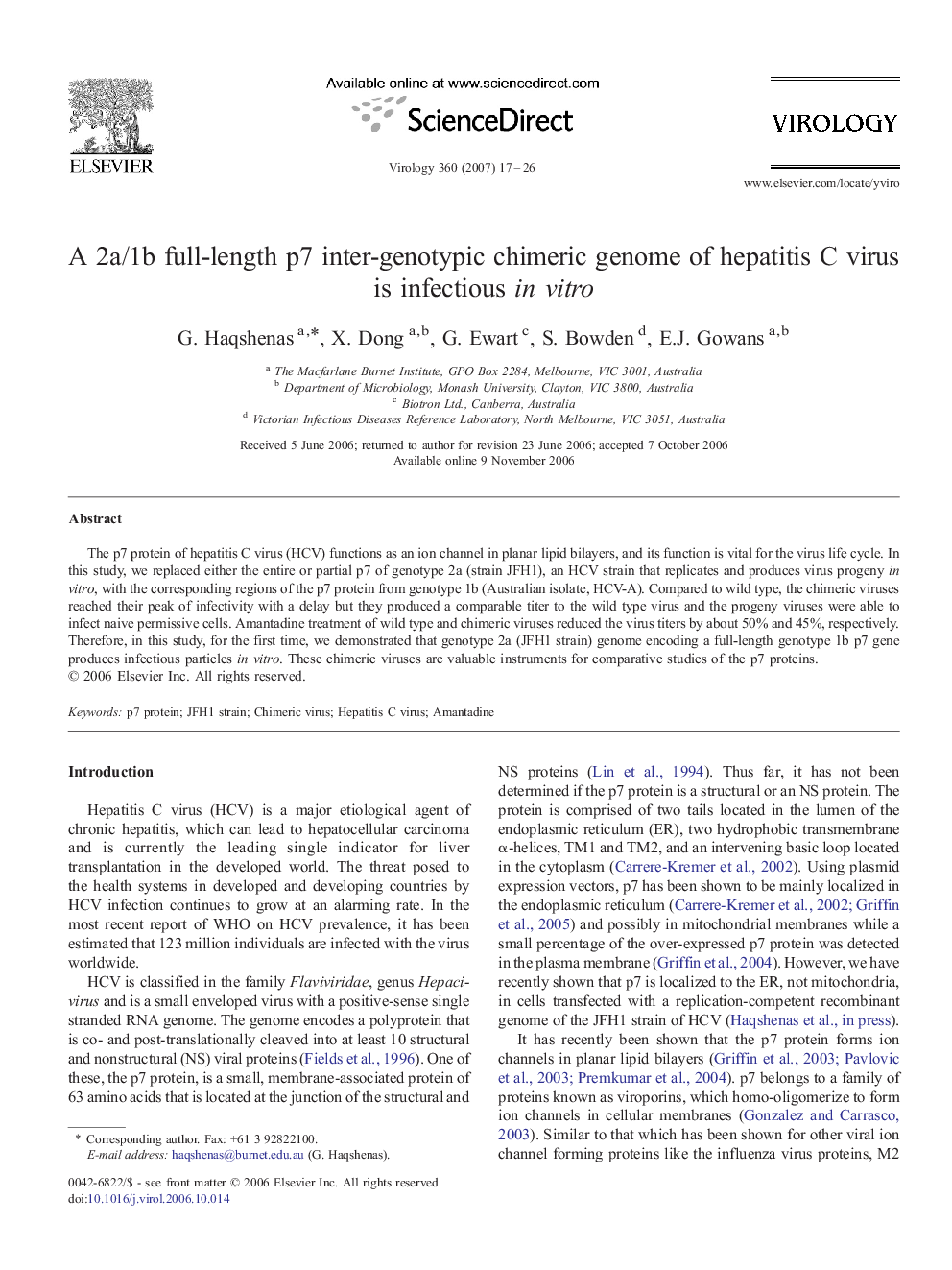| Article ID | Journal | Published Year | Pages | File Type |
|---|---|---|---|---|
| 6141819 | Virology | 2007 | 10 Pages |
Abstract
The p7 protein of hepatitis C virus (HCV) functions as an ion channel in planar lipid bilayers, and its function is vital for the virus life cycle. In this study, we replaced either the entire or partial p7 of genotype 2a (strain JFH1), an HCV strain that replicates and produces virus progeny in vitro, with the corresponding regions of the p7 protein from genotype 1b (Australian isolate, HCV-A). Compared to wild type, the chimeric viruses reached their peak of infectivity with a delay but they produced a comparable titer to the wild type virus and the progeny viruses were able to infect naive permissive cells. Amantadine treatment of wild type and chimeric viruses reduced the virus titers by about 50% and 45%, respectively. Therefore, in this study, for the first time, we demonstrated that genotype 2a (JFH1 strain) genome encoding a full-length genotype 1b p7 gene produces infectious particles in vitro. These chimeric viruses are valuable instruments for comparative studies of the p7 proteins.
Related Topics
Life Sciences
Immunology and Microbiology
Virology
Authors
G. Haqshenas, X. Dong, G. Ewart, S. Bowden, E.J. Gowans,
